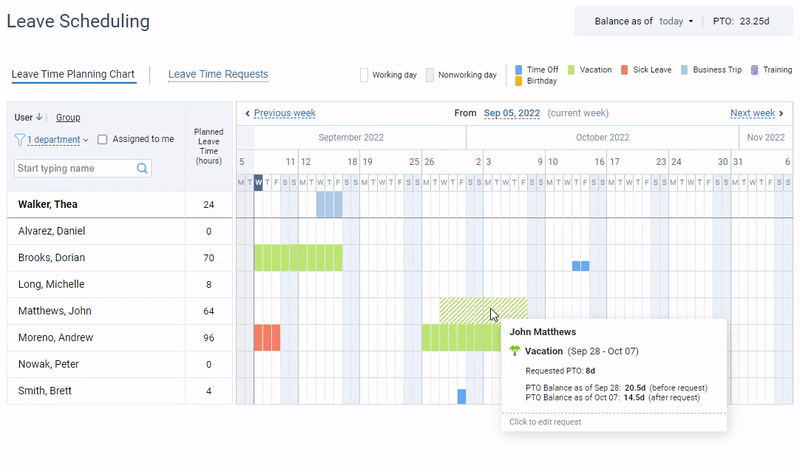In today’s fast-paced and competitive business world, companies are realizing the importance of offering sabbatical leave to their employees. Sabbatical leave is a type of extended time off from work that provides employees with the opportunity to recharge, refresh, and pursue personal or professional growth goals.
What is Sabbatical Leave?
Sabbatical leave, also known as a career break or extended leave, is a form of time off from work that is granted to employees who have been with a company for a certain period of time. It is typically an extended period of time, ranging from several weeks to several months, during which the employee takes a break from their regular work responsibilities.
What are the Benefits of Sabbatical Leave?
Offering a sabbatical leave can be beneficial for both employees and employers.
Benefits for Employees
- Time to recharge and rejuvenate: A sabbatical leave can provide employees with the time they need to rest, relax, and recharge their batteries.
- Opportunity to pursue personal or professional goals: A sabbatical leave can provide employees with the opportunity to pursue personal or professional growth goals, such as taking courses, traveling, or volunteering.
- Increased job satisfaction and motivation: By taking a break from work, employees may come back to work feeling refreshed, motivated, and more productive.
Benefits for Employers
- Improved retention rates: Offering sabbatical leave can be a powerful tool for retaining top talent, as it demonstrates a company’s commitment to employee well-being.
- Increased employee engagement: Sabbatical leave can provide employees with the opportunity to pursue personal or professional goals, which can lead to increased job satisfaction and engagement.
- Reduced burnout: By taking a break from work, employees may be less likely to experience burnout, which can improve their overall well-being and productivity.
What are the Pros and Cons of Offering Sabbatical Leave?
While sabbatical leave can offer many benefits, there are also some potential drawbacks to consider. Here are some of the pros and cons:
Pros:
- Increased employee loyalty and retention;
- Improved employee engagement and job satisfaction;
- Reduced burnout and stress;
- Opportunity for employees to pursue personal or professional growth goals.
Cons:
- The cost of hiring and training replacement employees;
- Potential for decreased productivity while the employee is on leave;
- Possibility of resentment from employees who are not eligible for sabbatical leave;
- How to Organize Company Processes When an Employee Goes on Sabbatical Leave.
What to Keep In Mind When Offering a Sabbatical Leave
When an employee goes on sabbatical leave, it’s important to have a plan in place to ensure a smooth transition and maintain productivity. Here are some tips for organizing company processes during an employee’s sabbatical leave:
- Develop a plan for covering the employee’s responsibilities: Make sure to identify who will be responsible for the employee’s duties while they are away. Consider hiring a temporary employee or redistributing the workload among existing employees.
- Communicate the plan to everyone involved: Make sure that all relevant employees and managers are aware of the sabbatical leave and the plan for covering the employee’s responsibilities.
- Set expectations for the employee’s return: Determine the expected return date and any requirements for the employee’s reintegration into the workplace.
- Provide support for the employee: Consider offering resources to help the employee transition back into the workplace, such as training or coaching.
What Should Be Included In the Sabbatical Leave Policy?
Employers should consider having a sabbatical leave policy for several reasons. Firstly, it can help retain valuable employees who may otherwise leave for extended periods of time. Secondly, it can promote employee engagement, job satisfaction, and productivity upon the employee’s return. Lastly, it can help attract new talent who are looking for employers that offer sabbatical leave.
A sabbatical leave policy should include the following:
- Eligibility requirements, such as length of service and job performance criteria;
- Duration and frequency of the sabbatical leave;
- Pay and benefits during the sabbatical leave;
- Job security and rights upon the employee’s return;
- Application and approval process.
Ready to streamline your leave management processes and make sure your employees can take their well-deserved sabbaticals hassle-free? Try actiPLANS!
actiPLANS introduces a novel method to simplify team schedules and track attendance efficiently. It streamlines leave management and automates PTO calculations.
Using actiPLANS, team members can easily request time off and promptly receive approvals. The platform provides a detailed overview of past, present, and future schedules, enabling managers to quickly make adjustments based on project requirements and employee preferences.

Additionally, actiPLANS automates PTO and sick leave balance calculations, and includes a mobile app that enhances accessibility and efficiency in monitoring time off for both employees and managers.
Start your free trial today!
Summary
Sabbatical leave can be a valuable tool for personal and professional growth for employees and a strategic benefit for employers. By understanding the benefits of sabbatical leave and the rules and regulations surrounding it, employers can create a policy that attracts and retains valuable employees and promotes engagement and productivity.



